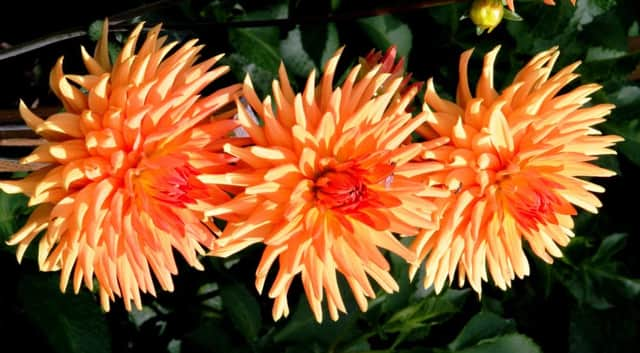Green shoots of recovery


The old, cleaned tubers, hidden away in a dark, frost-free spot, should be shown the light. Pop them into trays and cover them with fresh compost so the tops of last year’s stems are just peeping through, then add just a hint of water. New shoots should appear soon.
Select strong, healthy shoots about 3in long and remove them with a small sliver of the parent tuber. Use a clean knife to remove the lower leaves flush with the stem. Trim the base of the cutting to remove untidy ends that could rot.
Advertisement
Hide AdAdvertisement
Hide AdDip the bottom of each cutting into hormone rooting powder and pop three cuttings, about an inch deep, into a pot. Put a clear plastic bag over the pot and in about three weeks the cuttings will have formed roots.
Split the root ball apart and pop each cutting into a 3in pot. Feed weekly and plant out after the last frosts.
You can grow giant dahlias, tiny dahlias, dahlias with huge blooms and dahlias with miniature blooms; single-flowered, anemone-flowered, collerettes, paeony-flowered, decorative, ball, pompon, cactus, semi-cactus and those which are best called miscellaneous.
From the end of July till the first frosts, they flower long and hard, overshadowing everything. They love the sun but can grow well in shade; they like a rich soil, are stunning in herbaceous borders but are equally at home in containers.
Advertisement
Hide AdAdvertisement
Hide AdOnce planted, in late spring, there is little to do except provide support to stop their flower-heads dragging them down to soil-level and to feed and water.
When the first frost blackens the leaves, cut the stems to 8-10ins and dig up the tubers and pop them away in a shady, frost-free spot for a few days.
Prepare a shallow box with a mixture of garden soil and sand. Clean the tubers and put them in the box, just up to the stem. Then cut back the stems to an inch or two and store the boxes somewhere frost free and out of direct light – between 35 and 50F. Examine the tubers every few weeks, and then, come February, start the cutting regime all over again.